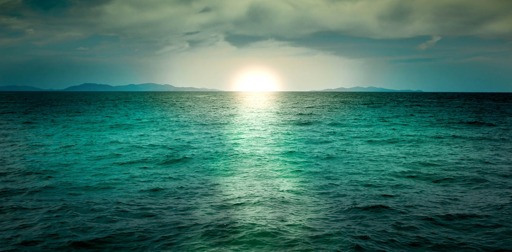- cross-posted to:
- [email protected]
- cross-posted to:
- [email protected]
Oxygen released by the rise of photosynthesis in the Archean eon then led to oxidised iron in seawater. The paper’s computer simulations also found oxygen released by early photosynthesis led to a high enough concentration of oxidised iron particles to turn the surface water green.
Once all iron in the ocean was oxidised, free oxygen (0₂) existed in Earth’s oceans and atmosphere. So a major implication of the study is that pale-green dot worlds viewed from space are good candidates planets to harbour early photosynthetic life.
Could oceans change colour again?
The lesson from the recent Japanese paper is that the colour of our oceans are linked to water chemistry and the influence of life. We can imagine different ocean colours without borrowing too much from science fiction.
Purple oceans would be possible on Earth if the levels of sulphur were high. This could be linked to intense volcanic activity and low oxygen content in the atmosphere, which would lead to the dominance of purple sulphur bacteria.
Red oceans are also theoretically possible under intense tropical climates when red oxidised iron forms from the decay of rocks on the land and is carried to the oceans by rivers or winds. Or if a type of algae linked to “red tides” came to dominate the surface oceans.


